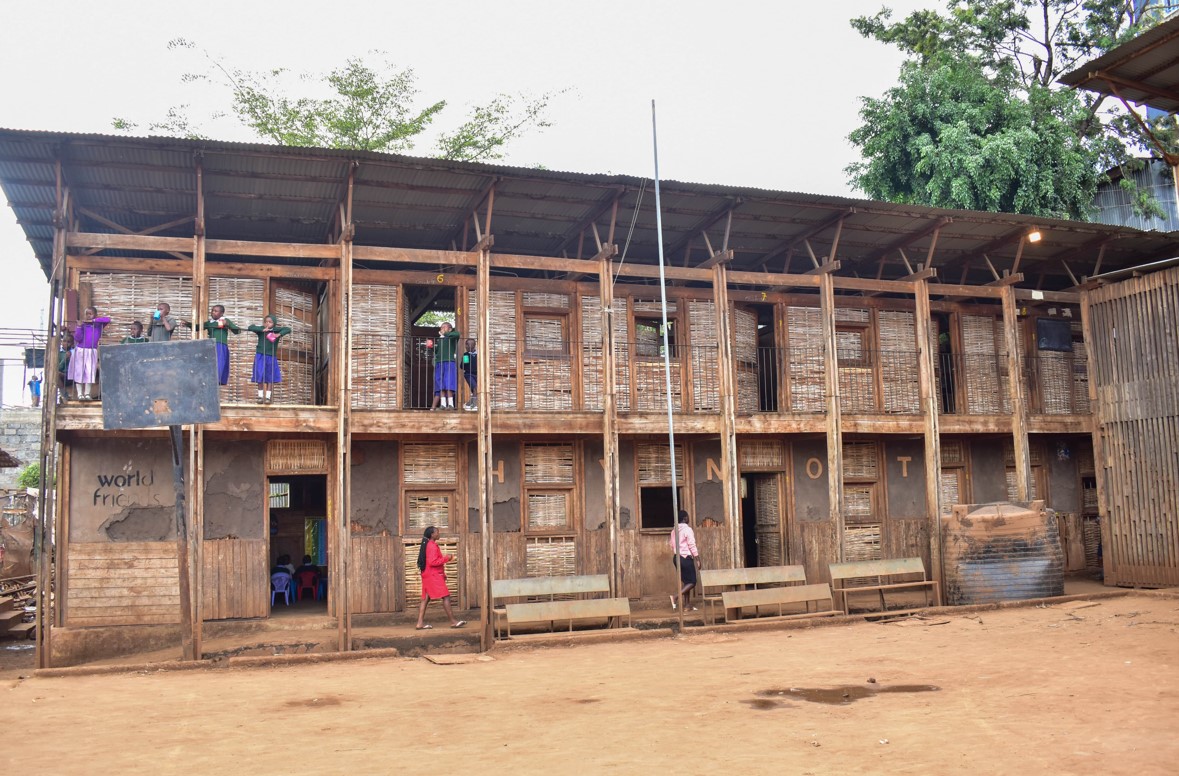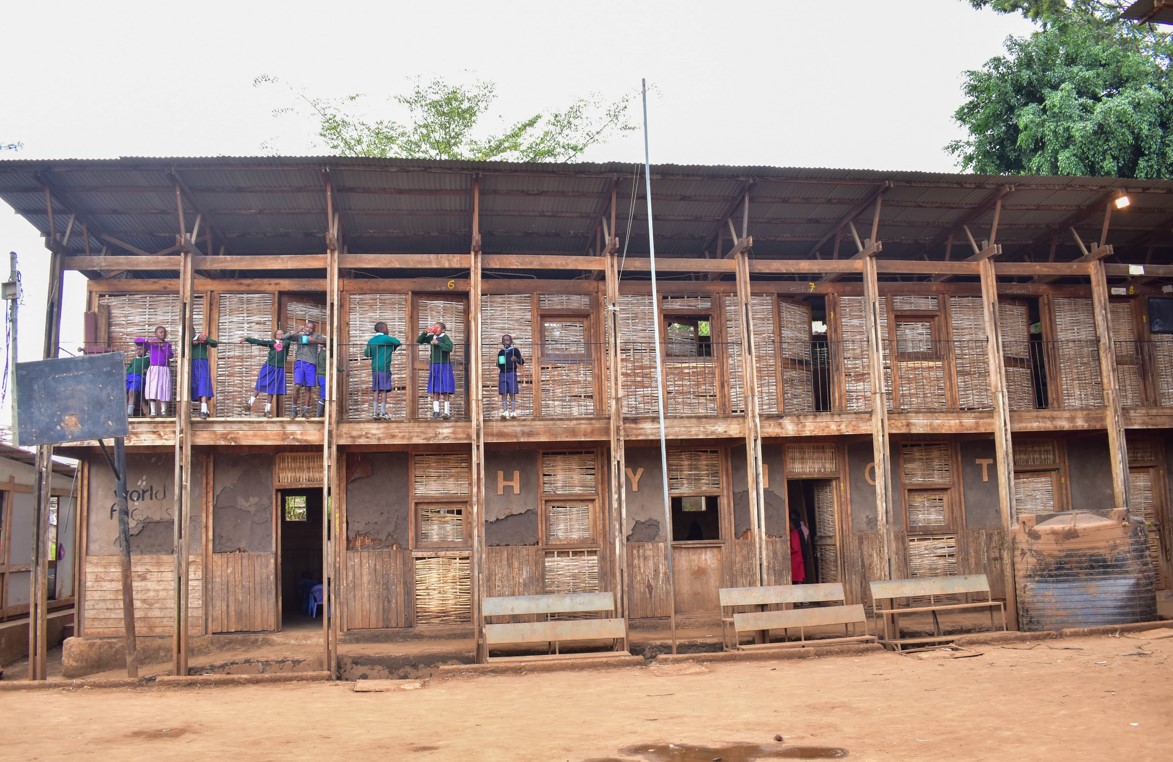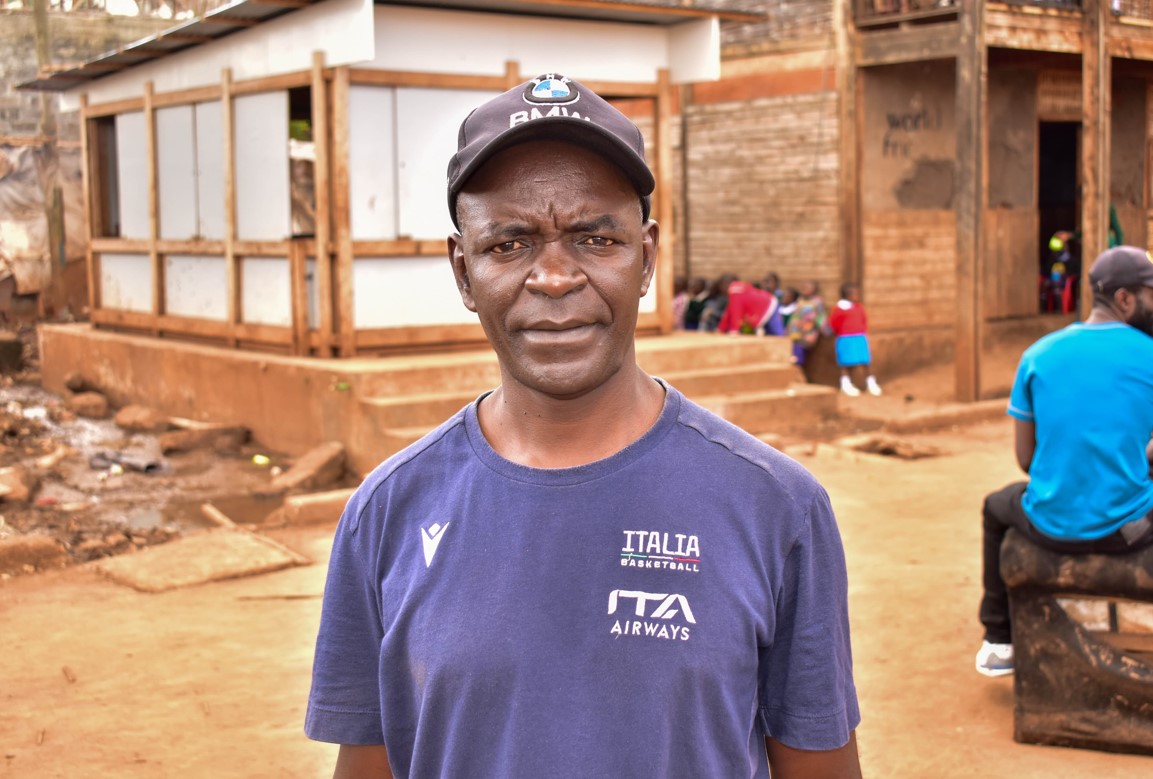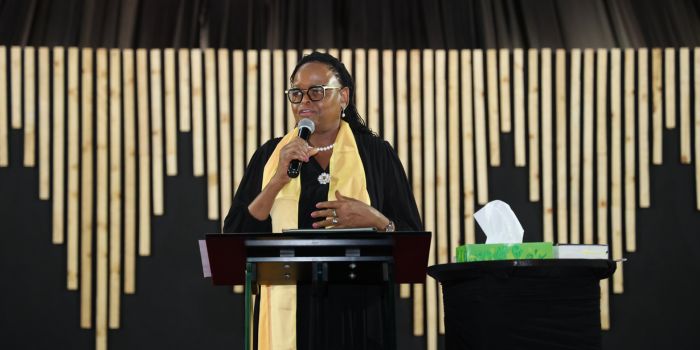Mathare's bamboo school offers eco-friendly learning to learners

By Lucy Mumbi |
As you enter its premises, you are met with the striking sight of bamboo structures seamlessly integrated into the lush, green landscape.
Why Not Junior Academy is a name that catches your attention immediately when you come across it.
Located in Nairobi’s Mathare informal settlement, the name sparks curiosity, making people stop and think about the simple yet profound question it poses —why not?
Keep reading
As you enter its premises, you are met with the striking sight of bamboo structures seamlessly integrated into the lush, green landscape.
The school's architecture, crafted from bamboo sticks, exudes natural elegance and sustainability.
The entrance opens into a spacious open ground where learners play football, basketball, and other games. The vast space, which is the largest in Mathare, serves not only the school's pupils but also the community used for recreational purposes.
Moving past the vibrant activity of the playground, you are led to a series of airy, open classrooms. Each classroom is defined by walls made from tightly bound bamboo stalks, offering a sense of sturdiness while allowing ventilation and natural light.
The roofs, composed of bamboo shingles, rise gracefully above the structures, their lightweight design providing ample protection from weather elements.
Inside, the classrooms are furnished with wooden desks and chairs, maintaining a cohesive and environmentally friendly aesthetic. The use of bamboo has been extended to the ceilings and beams, showcasing its versatility and strength.
Natural light floods the spaces through large, open windows, reducing the need for artificial lighting and creating a bright, welcoming atmosphere conducive to learning.
Dominic Otieno, the school’s director, said it was built using wood to ensure the students and the community thrive in an eco-friendly environment.
 The buildings at Why Not Junior Academy in Mathare, Nairobi are constructed using bamboo trees. (Photo Ahmed Shafat)
The buildings at Why Not Junior Academy in Mathare, Nairobi are constructed using bamboo trees. (Photo Ahmed Shafat)
"Back then, the houses around the slums were mostly constructed with local materials like wood and mud. Then came iron sheets, and the area was nicknamed Mabatini. This building was intended as an exhibit to teach the community that they could use local materials to build nice houses. The mud houses were often poorly built, with mud scattered haphazardly, leading to rapid deterioration. We wanted to show that we could use wood, which is locally available and eco-friendly, to construct our buildings," Otieno said.
Why Not Junior Academy was started in 2006 to provide quality education to children in the slums, who often face numerous barriers while accessing formal education.
The school has around 120 pupils in various classes from Early Childhood Development Education to Grade Six.
Name origin
The name of the school and its meaning always puzzles many.
"The school is a project of the Why Not Community Association. The name Why Not was chosen because it represents our determination not to give up. Before Why Not, we had another association called Maendeleo Mabatini Youth Group, which comprised young people. Then, some challenges split the association, and our certificate was confiscated. So, the few of us who remained didn't want to give up and decided to change the name," Otieno explained.
"The name Why Not came after a long search. Throughout the search, I kept asking myself, 'Why not this name or that name?' Eventually, I just decided on 'Why Not.' It's meant to inspire us to keep going."
Since its inception, the institution has impacted the Mathare community significantly by being a sanctuary where children can escape the challenges of slum life and immerse themselves in learning and personal growth.
 Dominic Otieno, the Director of Why Not Junior Academy in Mashimoni, Mathare in Nairobi. (Ahmed Shafat)
Dominic Otieno, the Director of Why Not Junior Academy in Mashimoni, Mathare in Nairobi. (Ahmed Shafat)
Samuel Odhiambo, whose son is in Grade 5, said it is hard for many parents in Mathare to pay fees in many private schools.
“However, Why Not Junior Academy has been of tremendous help, especially for parents like me who struggle to support our families. Despite the occasional difficulty in providing all the necessary materials, I'm grateful that my son is receiving a quality education, something I never thought I could provide. He dreams of becoming a doctor, and now I believe that dream can come true," he said.
Jane Mwangi, a mother of three expressed similar sentiments.
"All I want is for my children to receive quality education to enable them to build their future. It doesn't matter if the school is built with wood. As long as they acquire knowledge, I'm happy and life goes on," she said.
Despite its determination, the institution faces challenges, threatening its existence in Mathare.
According to the director, their biggest challenge is the lack of sponsors to support their vision of providing quality education.
"When we started the school, there were no other educational institutions nearby, and we aimed to collaborate closely with the community and parents. However, we reached a point where we got stuck. This year, we haven't even been asking for full school fees. We accept whatever parents can afford, with a maximum of Sh500 per month. Initially, we believed in working hand in hand with the community, but we lost ground to our competitors," Otieno said.
"Education for people in the slums encompasses more than just academics. It includes donations of food, clothes, and support to parents. Currently, we are in the process of re-strategising to regain our strength as competitors have already established themselves and are attracting most of the children. I am genuinely apprehensive about continuing with this vision."
Otieno appealed to the government to recognise the vital Why Not Junior Academy plays in uplifting the Mathare community through education and providing it with essential learning materials. He said the school is committed to nurturing young minds despite financial challenges.



















